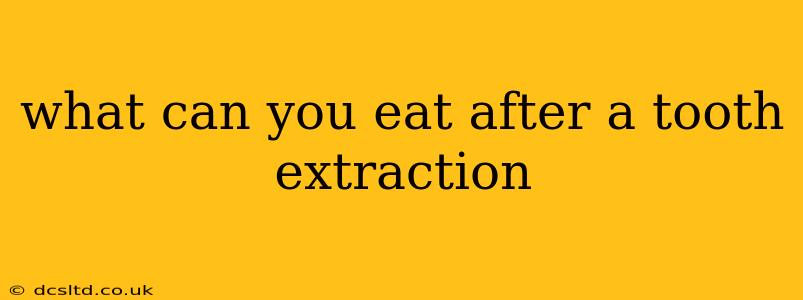What Can You Eat After a Tooth Extraction? A Guide to Post-Extraction Nutrition
Having a tooth extracted can be a bit of a setback, but getting back on your feet—and back to eating normally—is an important part of the healing process. What you eat (and what you avoid) in the crucial days following your extraction significantly impacts your recovery. This comprehensive guide outlines safe and nutritious food choices to help you heal comfortably.
Understanding the Importance of Post-Extraction Diet
The area where your tooth was extracted is a delicate wound. Consuming the right foods will prevent dislodging the blood clot (critical for healing), minimize infection risk, and provide your body with the nutrients needed for recovery. Avoiding unsuitable foods prevents irritation, pain, and potential complications.
What to Eat After a Tooth Extraction:
Here's a breakdown of ideal foods categorized by texture and nutritional value:
Soft Foods (Days 1-3): During the initial days, focus on exceptionally soft foods that require minimal chewing.
- Smoothies: Blend fruits, vegetables, yogurt, and even protein powder for a nutrient-rich meal replacement.
- Applesauce: A classic post-extraction food, offering sweetness and essential nutrients.
- Yogurt (plain or flavored): Provides protein and probiotics for gut health.
- Mashed Potatoes: Creamy and easy to swallow, providing carbohydrates for energy.
- Oatmeal (thin): A good source of fiber, but ensure it's well-cooked and smooth.
- Scrambled Eggs: Packed with protein for tissue repair, but ensure they are very soft.
- Soups (broth-based): Choose soups with finely chopped or pureed vegetables. Avoid soups with hard pieces.
Semi-Soft Foods (Days 3-7): As healing progresses, you can gradually introduce slightly firmer foods.
- Pasta (well-cooked): Opt for soft pasta shapes and gentle sauces.
- Cooked Vegetables (pureed or finely mashed): Carrots, peas, and sweet potatoes are nutritious choices.
- Soft Tofu: A great source of protein.
- Refried Beans: Easy to mash and full of fiber.
- Well-cooked fish (flaked): A good source of protein.
Foods to Avoid After a Tooth Extraction:
- Hard Foods: Avoid anything that requires significant chewing, such as nuts, hard candies, chips, and popcorn. These can dislodge the blood clot or irritate the extraction site.
- Sticky Foods: Sticky foods like caramel, taffy, and gummy candies can also interfere with healing.
- Extremely Hot or Cold Foods: These can cause discomfort and potentially impact healing.
- Foods Requiring Strong Sucking: Using a straw can create suction, potentially dislodging the blood clot. Avoid using straws.
- Alcohol and Smoking: Both impair healing and increase infection risk.
How Long Does it Take to Heal?
Healing times vary, but most people experience significant improvement within a week. Complete healing can take several weeks or even months.
What if I Experience Dry Socket?
Dry socket (alveolar osteitis) occurs when the blood clot is dislodged from the extraction site. This is painful and requires medical attention. Contact your dentist immediately if you experience severe pain, a bad taste, or see visible bone in the socket.
What Should I Do if I Have Any Concerns?
Always follow your dentist's post-operative instructions carefully. If you have any concerns about pain, swelling, or other complications, contact your dentist immediately. They can provide personalized advice and address any issues promptly.
This guide provides general advice. Always consult your dentist or oral surgeon for specific instructions based on your individual case and healing progress. They are the best resource for personalized dietary recommendations post-extraction.
